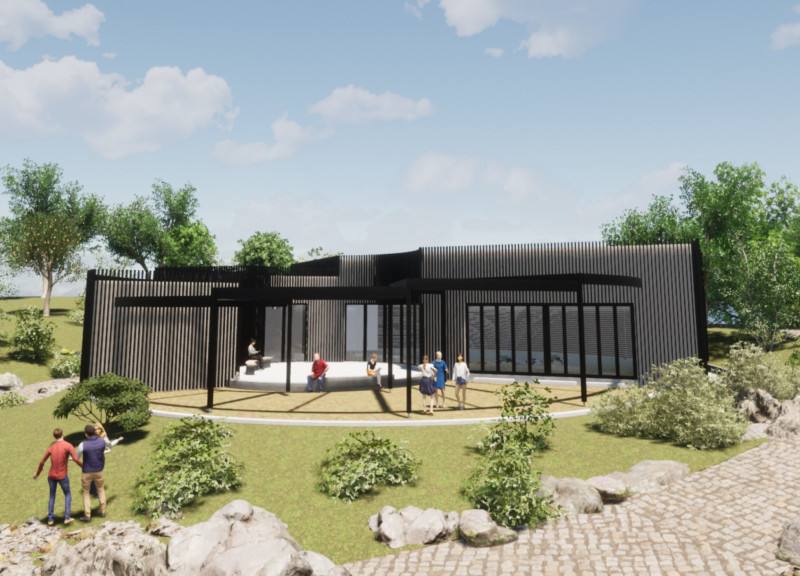5 key facts about this project
The "heart of spirala" is located in Portugal and serves as a community center designed to blend with its natural surroundings while meeting the needs of local residents. The vision is to minimize environmental impact through thoughtful architecture that encourages social interaction. The design integrates outdoor spaces and functionality, creating an inviting atmosphere for various community activities.
Materials and Aesthetic
An important aspect of the design is the exterior wood cladding. This material is chosen not only for its visual appeal but also for its ability to change over time. As it weathers, it develops a unique character that reflects the surrounding environment. This approach highlights a strong connection between the building and its setting, enhancing the overall experience for visitors. The choice of locally sourced materials supports sustainability and creates a sense of belonging within the community.
Roof Integration
The roof features an extensive planting strategy, allowing it to connect with the landscape around it. This green roof serves multiple purposes. It improves the building's thermal performance while promoting local plant life. The planted areas contribute to biodiversity and create a natural buffer that enhances the environment. This thoughtful integration helps the community center feel like a part of the landscape rather than an imposition upon it.
Community-Centric Spaces
The layout of the community center focuses on outdoor areas, especially the terrace. This space is designed for various activities, providing a shaded area that encourages social gatherings. Whether for events or casual meetups, the terrace promotes interaction among users. The arrangement of spaces reflects the goal of fostering a sense of community and belonging, making it accessible and inviting for all.
Sustainable Technologies
Sustainability is a core principle in the design. The building includes systems for rainwater harvesting, capturing water to be stored and reused. Potential installation of photovoltaic panels on the roof supports energy efficiency, allowing for solar energy capture. Ventilation flaps in the outer walls enhance cooling by letting fresh air in at night. This design keeps the indoor spaces comfortable and reduces energy consumption.
The insulation material used is cork, which is locally sourced and known for its thermal properties. This choice emphasizes environmental responsibility while ensuring comfort for occupants. Overall, the "heart of spirala" reflects a commitment to creating a meaningful space that is responsive to both community and environment.






















































